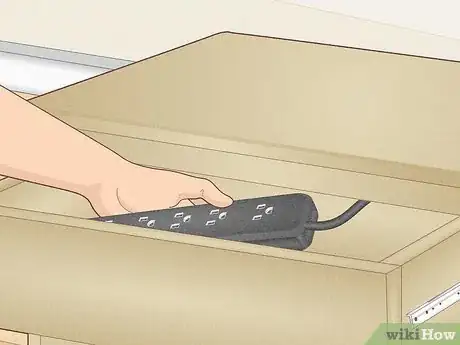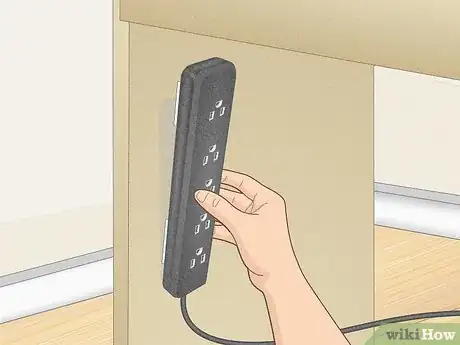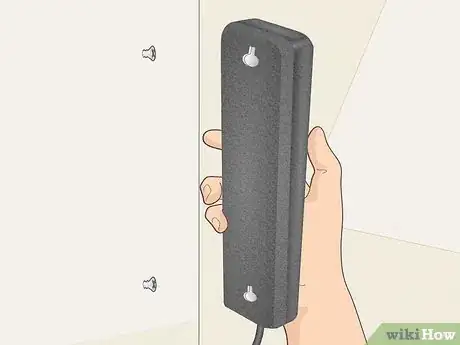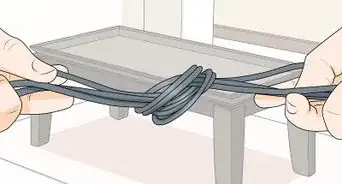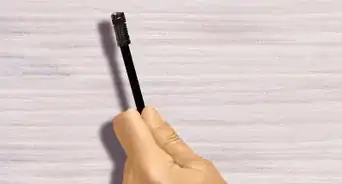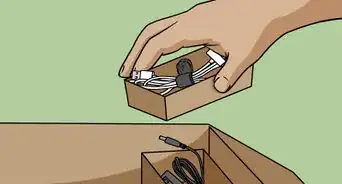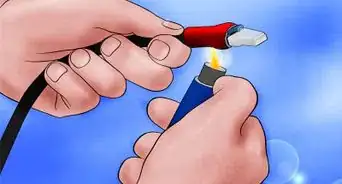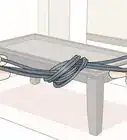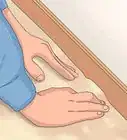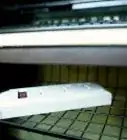This article was co-authored by wikiHow staff writer, Darlene Antonelli, MA. Darlene Antonelli is a Technology Writer and Editor for wikiHow. Darlene has experience teaching college courses, writing technology-related articles, and working hands-on in the technology field. She earned an MA in Writing from Rowan University in 2012 and wrote her thesis on online communities and the personalities curated in such communities.
There are 8 references cited in this article, which can be found at the bottom of the page.
This article has been viewed 32,595 times.
Learn more...
Power strips are great if you want to plug more than 2 items into a conveniently placed outlet, but they aren’t particularly beautiful. If you’re trying to clean up that giant bundle of cables and cords, hiding the power strip is a great place to start. There are several accessories out there you can buy to make hiding your power strip easy, but you can also hide the power strip by getting a little creative with your furniture and outlet selection.
Here are 6 different ways you can hide unsightly power strips in your home.
Steps
Warnings
- Don’t run cords under rugs. People can trip or accidentally rip them out of the outlet with their feet, which can damage them.[13]⧼thumbs_response⧽
- It’s safe to use an extension cord to extend a cord to reach the power strip, but not to extend the power strip itself.[14]⧼thumbs_response⧽
- Don’t plug anything that generates a lot of heat into a power strip. Toasters, hair dryers, and space heaters are best off being plugged directly into the wall.[15]⧼thumbs_response⧽
References
- ↑ https://www.architecturaldigest.com/gallery/how-to-hide-unsightly-cords
- ↑ https://www.cnet.com/how-to/not-enough-power-outlets/
- ↑ https://www.cnet.com/how-to/not-enough-power-outlets/
- ↑ https://www.cnet.com/how-to/not-enough-power-outlets/
- ↑ https://www.bobvila.com/slideshow/10-smart-cord-management-solutions-under-50-4819
- ↑ https://youtu.be/ZwobDo1bNWY?t=92
- ↑ https://www.bobvila.com/articles/how-to-hide-tv-wires/
- ↑ https://www.popsci.com/how-to-hide-cables/
- ↑ https://www.architecturaldigest.com/gallery/how-to-hide-unsightly-cords
- ↑ https://www.ius.edu/environmental-health-safety/files/extension-cord-and-power-strip-safety.pdf
- ↑ https://www.ius.edu/environmental-health-safety/files/extension-cord-and-power-strip-safety.pdf
- ↑ https://www.pcworld.com/article/2144766/the-beginners-guide-to-proper-pc-cable-management.html
- ↑ https://www.cnet.com/how-to/not-enough-power-outlets/
- ↑ https://www.ius.edu/environmental-health-safety/files/extension-cord-and-power-strip-safety.pdf
- ↑ https://www.cnet.com/how-to/not-enough-power-outlets/


